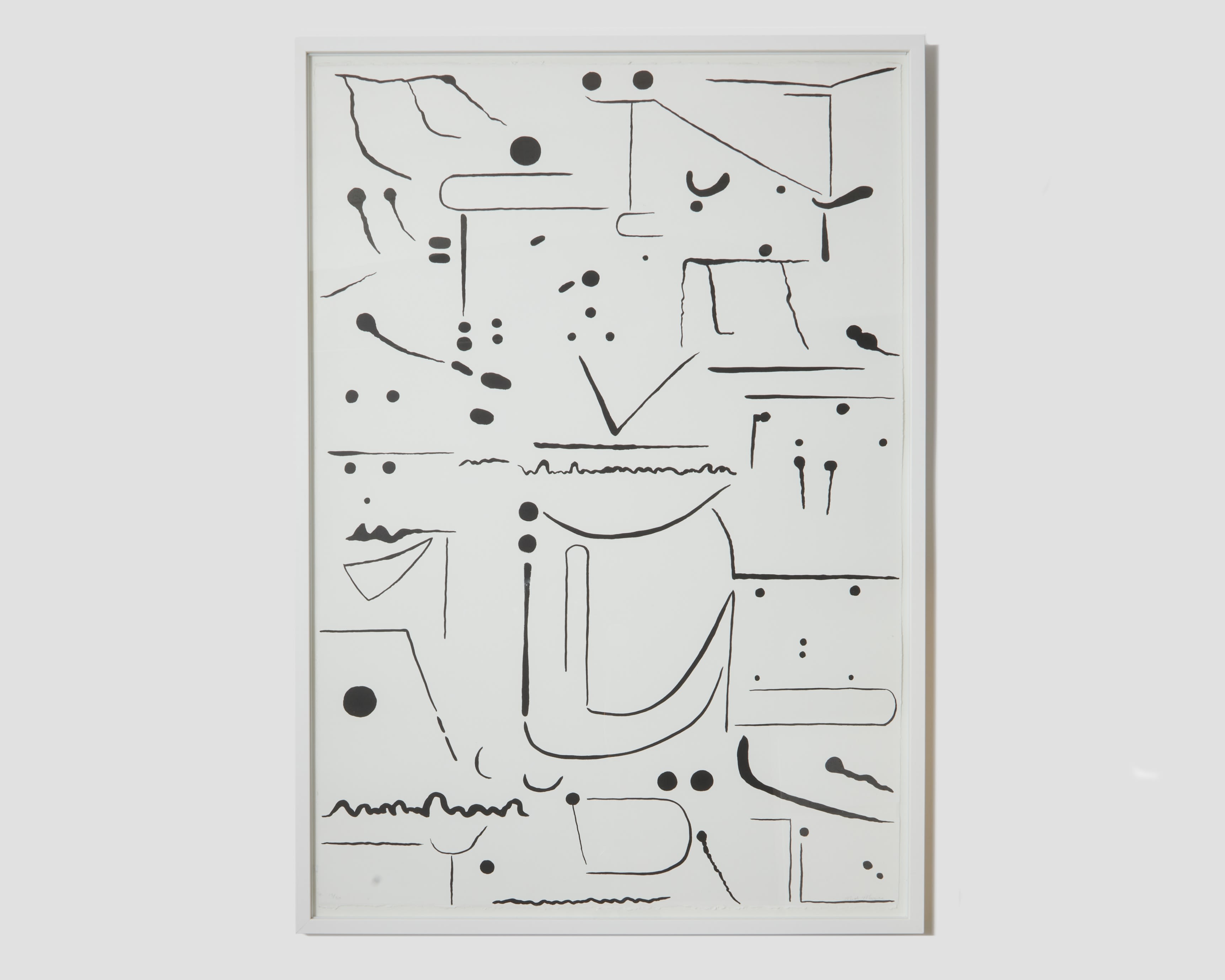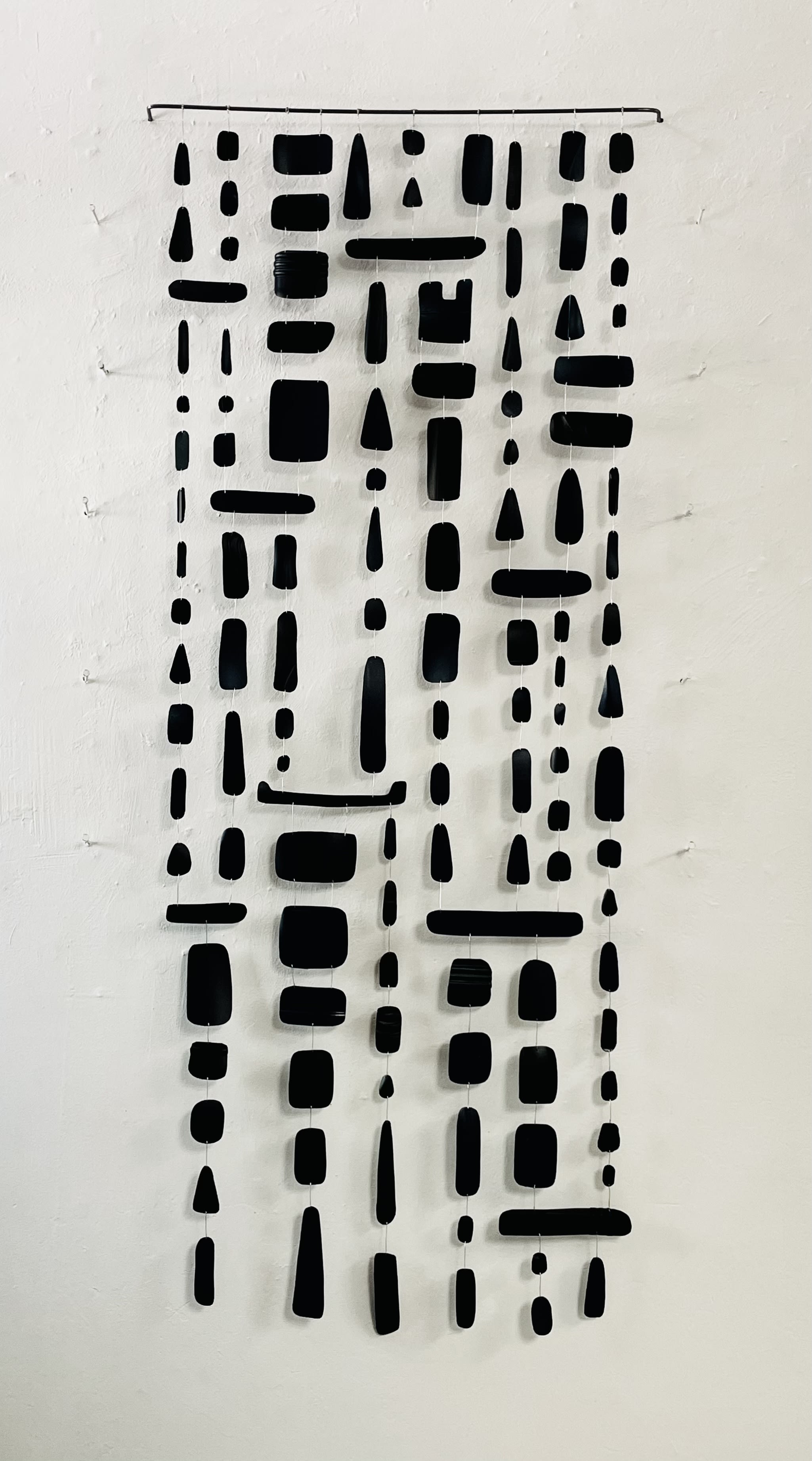
Black and White is an exhibition of monochromatic works by Matt Magee pulled from Tamarind Institute, Woolworth Publications, Manneken Press, Obee Editions, and the artist’s studio. Together, these works show the development of Magee’s mark making since 2019. With their grid-like arrays of non-representational forms and pared back palettes, the works in this exhibit lay bare the semantics of Magee’s visual language, which is influenced by location, collaborators, and artistic inspirations, and is increasingly asemic in nature.
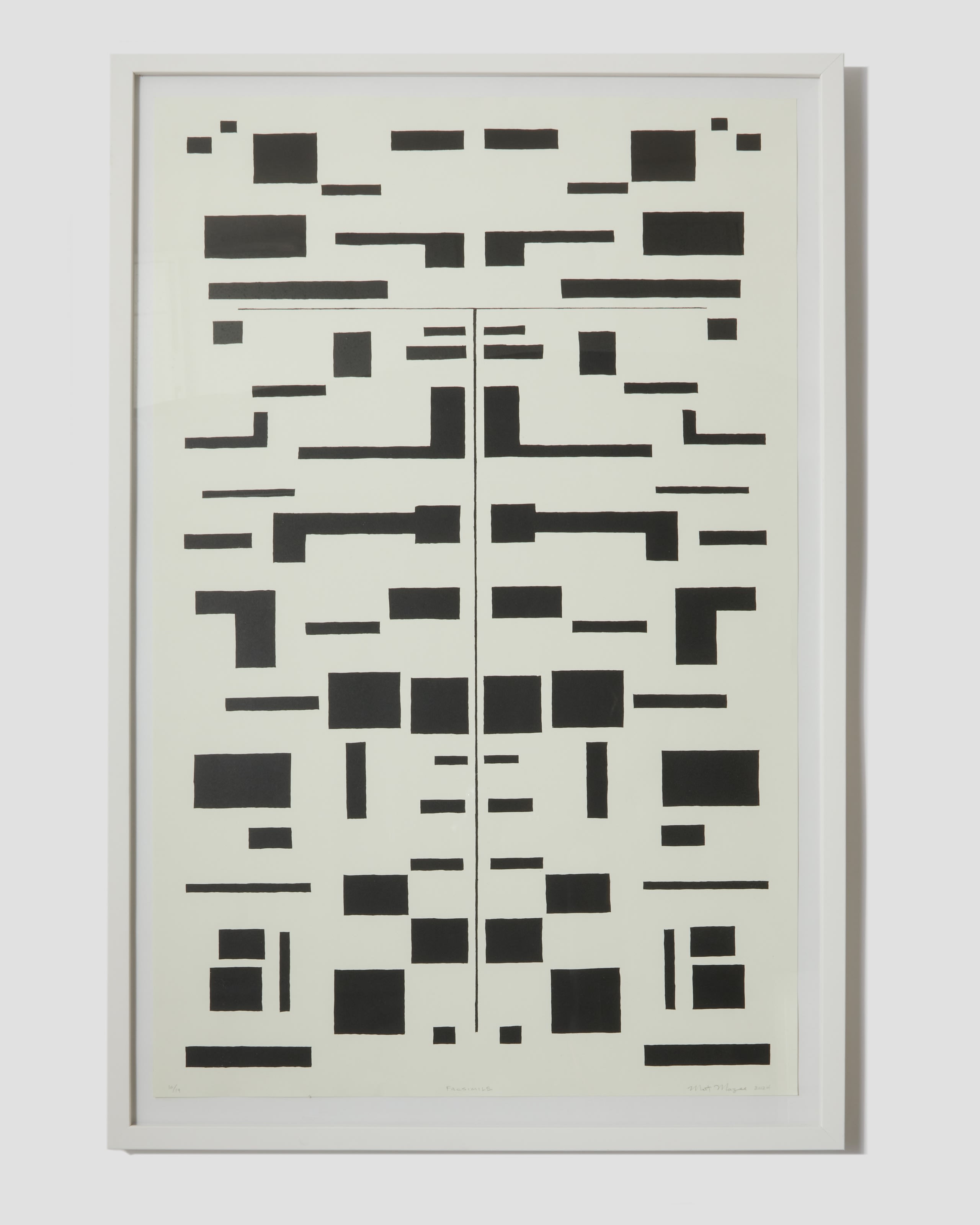
Asemic means “having no specific semantic context.” Authority on the subject, Peter Schwenger defines it as a wordless, open semantic form of writing. The name “asemic writing” may be a creation of art history, but the practice isn’t. Examples of what we now call asemic writing include Zhang Xu’s calligraphy (a Tang Dynasty calligrapher and poet circa 800 CE) and Mayan stelae or monuments, some of which contain semantic systems that resist interpretation. These historical examples of asemic writing occurred around the same time, but in two distinct parts of the world, which suggests that to adapt, change, interpret and play with semantic systems is a human trait and not just austere modern art philosophy. — Compare Paul Klee’s (1879-1940) asemic compositions with Zhang Xu’s (fl. 8th century) calligraphy — What we now call asemic writing is a human phenomenon, not a modern art phenomenon.
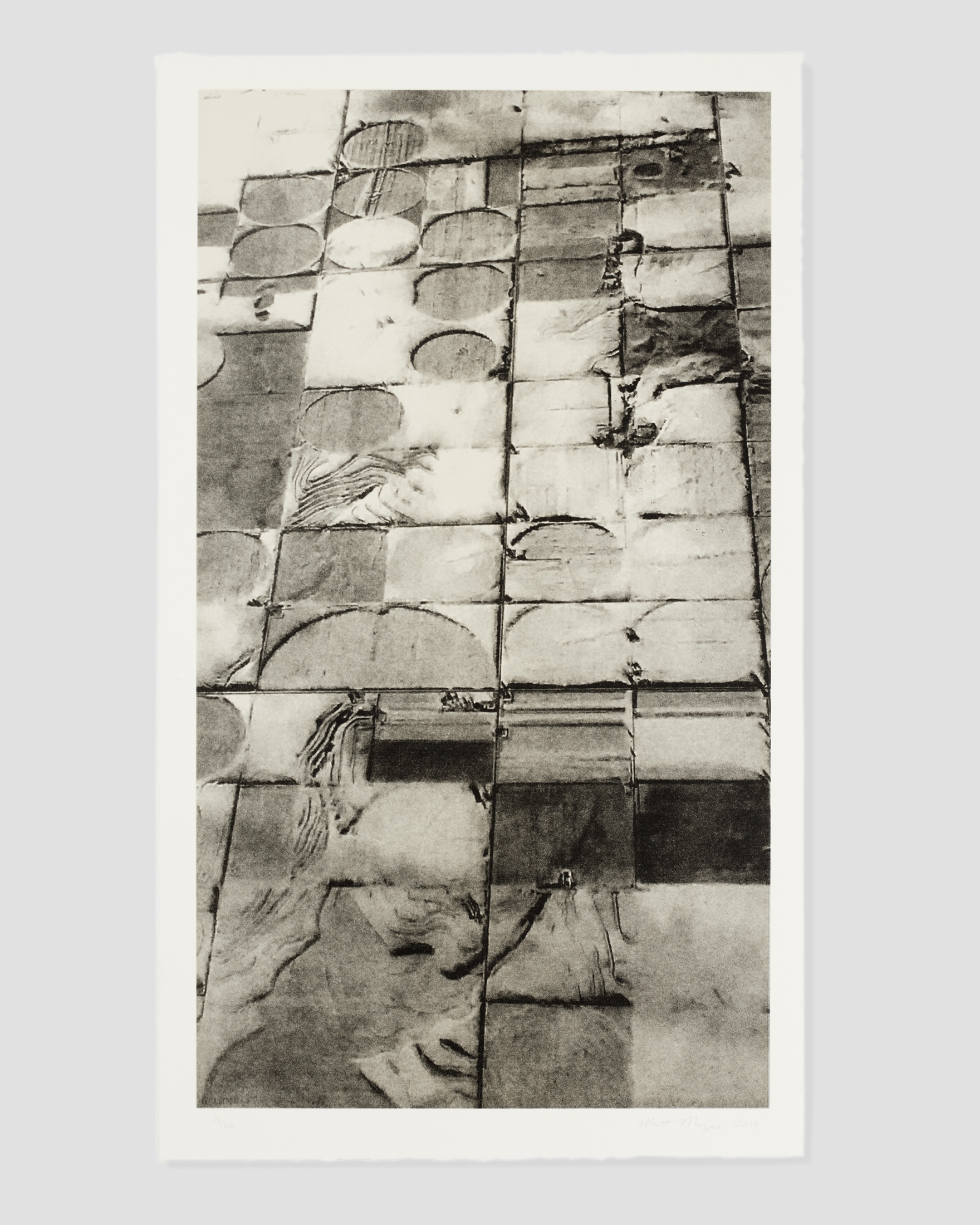
In his series Fact, Madrigal, Topologie, and Bugs, Drugs, Plugs, Magee demonstrates a new way to compose asemic writing by taking representational scenes — swim bags hung on locker room hooks, iPhone photos taken from an airplane window at 30,000 ft., and caulking used to adhere tiles to a ceiling in Mobile, Alabama — and stripping them of visual clues that suggest what they are. In this way, a snapshot of poolside gym bags and towels becomes a grid of forms that suggest something by way of their organization. Try as we might, that something remains objectively indecipherable, even when the creative impetus for a work is revealed or suggested.
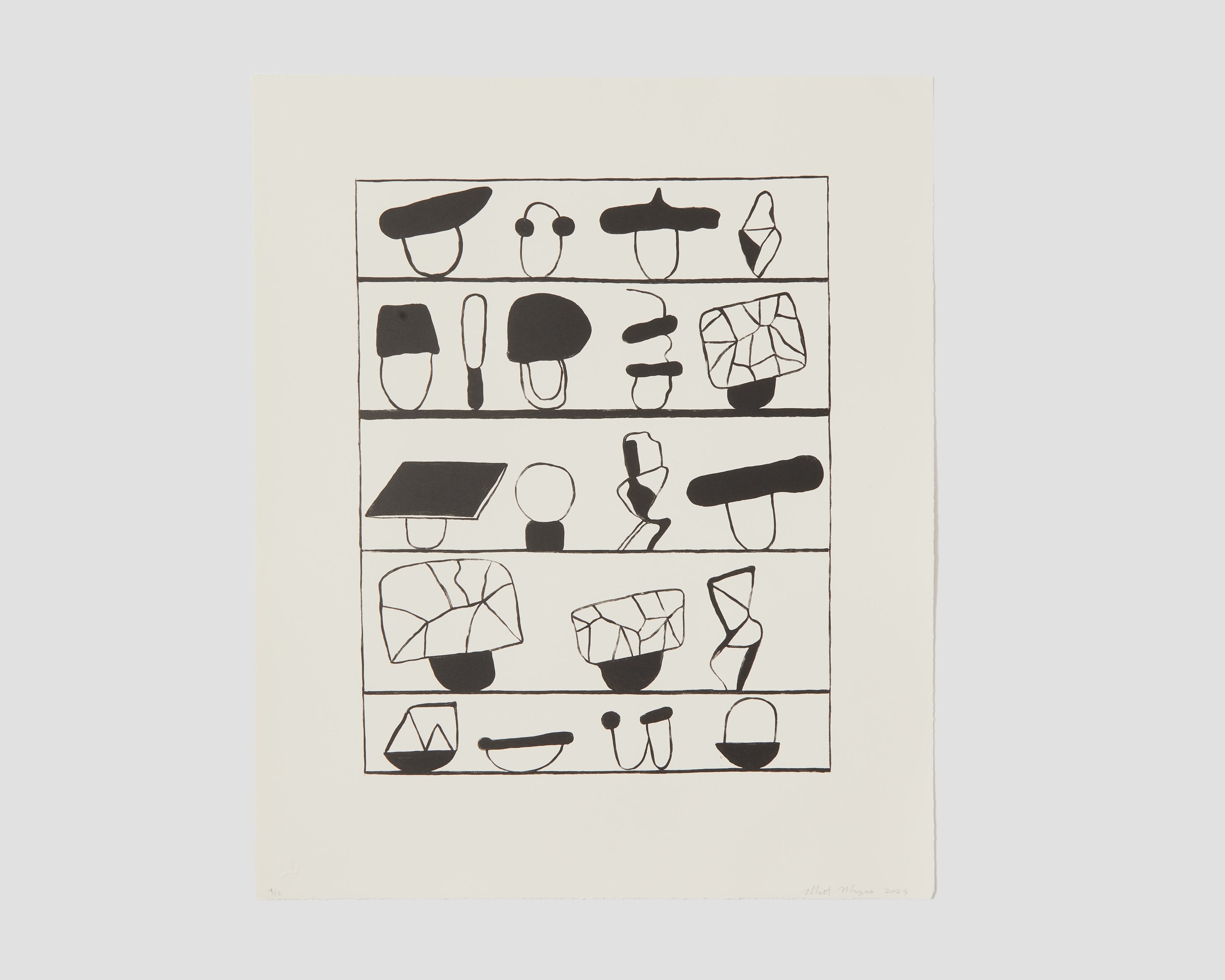
The tension between legibility and illegibility in Black and White leaves viewers in a state between reading/understanding a work and looking/experiencing it. To break out of these dichotomies, read/understand, look/experience, black/white, viewers must use their powers of interpretation and pattern recognition to manufacture meaning. The truth of this meaning depends largely on corroboration between viewers.
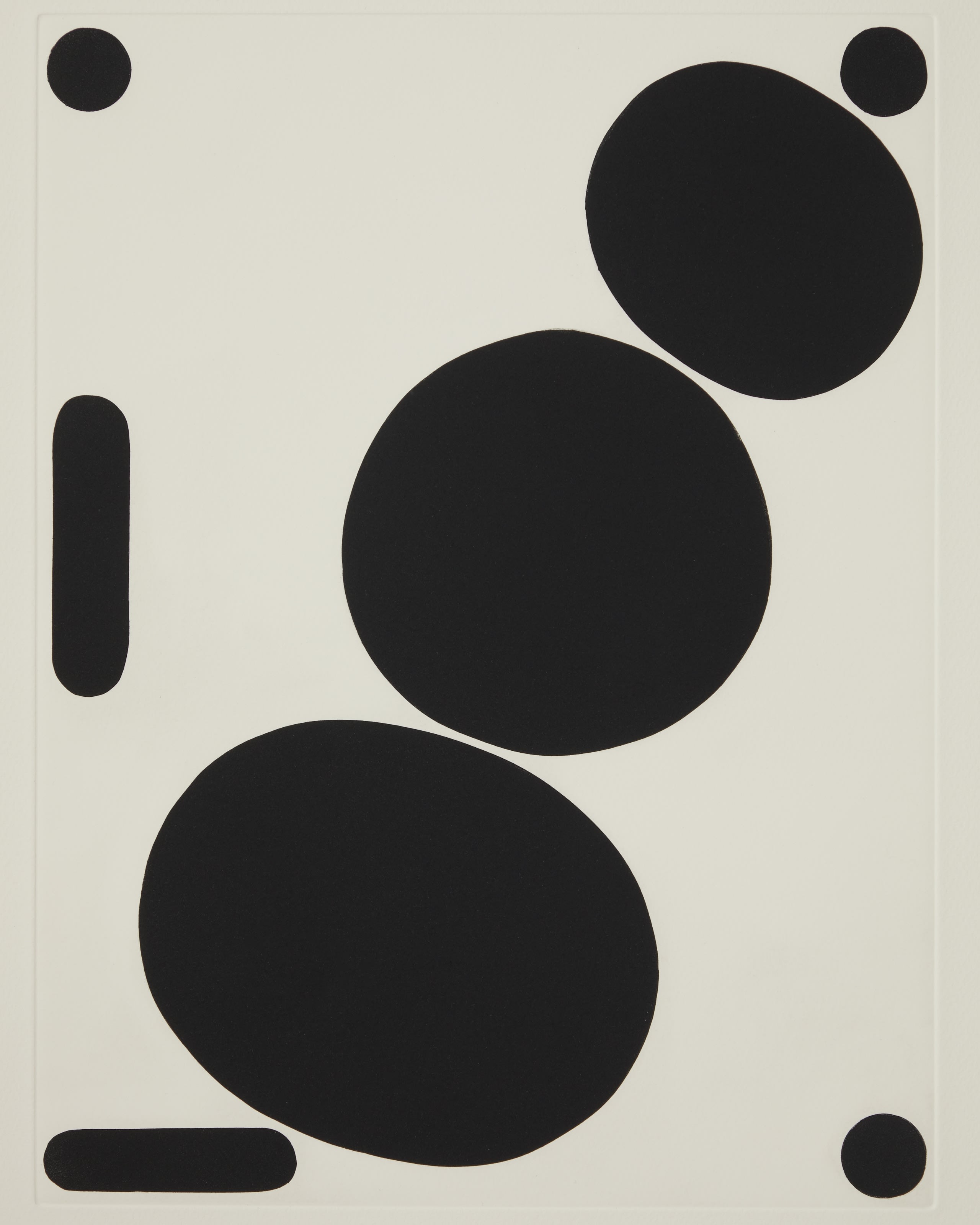
In Black and White, we have arrived at a post-literate world, where reading and writing are no longer needed. What we decide to make of this post-literate world depends, like Magee’s work, on how we utilize our subjective experiences as platforms for manufacturing meaning.
